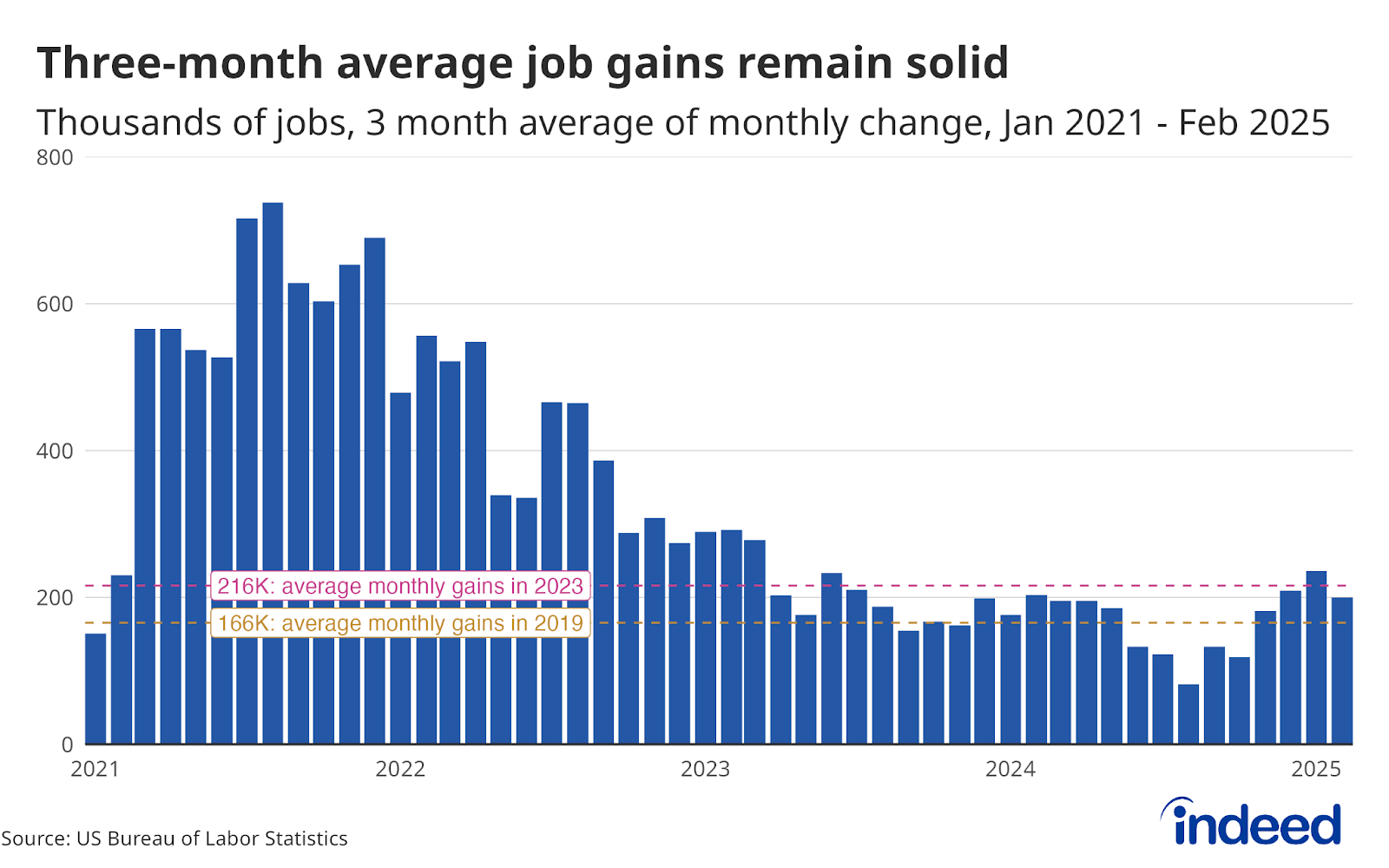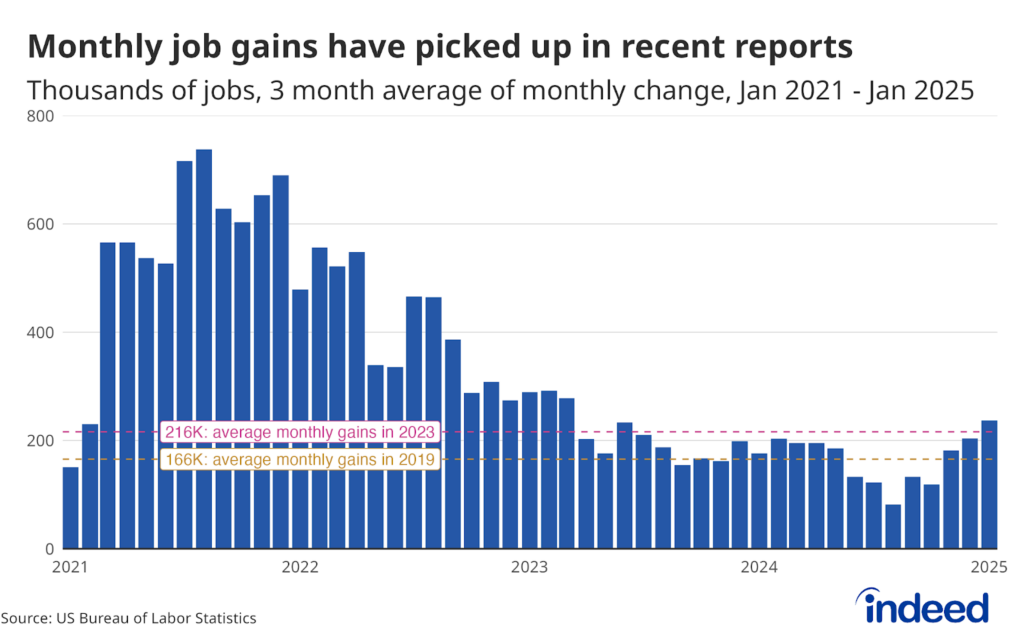Key Points:
- According to the Bureau of Labor Statistics, total nonfarm payroll employment rose by 151,000 in February, and the unemployment rate ticked up slightly to 4.1%.
- Federal employment officially fell by 10,000 workers last month, but the total number was likely higher, given data collection that happened relatively early in February.
- Private-sector job gains were broad-based, with 58% of non-government employers adding jobs in February. Gains in healthcare and social assistance jobs accounted for 45% of the 140,000 total private-sector jobs added last month.
Despite mounting economic and geopolitical uncertainty, the national labor market notched another month of decent job gains and low unemployment. But there’s also potential trouble brewing beneath the surface of this report. Inflation remains stubbornly high and may yet climb higher. A rapid reversal in federal government hiring is showing signs of trickling down into state and local government hiring. And it remains uncomfortably difficult for unemployed people who want a job to quickly find one.
All eyes will likely be on federal employment, which officially fell by 10,000 in February. But the total reduction in federal employment was likely even larger last month, given the timing of data collection that happened towards the beginning of last month. Federal employment (minus post office workers) added an average of 6,400 jobs per month between July 2022 and March 2024, slowing to roughly 3,000/month towards the end of last year and then falling off a cliff last month. This federal slowdown is also showing signs of trickling down into state and local government hiring. Local government employment gains have fallen from an average of 36,000 jobs added per month between December 2023 and February 2024, to 18,000 in the past three months.
Private sector job gains were fairly broad-based in February, with 58% of all non-government employers adding jobs for the month. However, those gains were not distributed equally — healthcare and social assistance accounted for 45% of the private sector’s 140,000 increase. Private sector employers added 169,000 jobs per month, on average, from December 2024 through February.
Going forward, the full impacts of all the new policies, proposals, and abrupt reversals that are the hallmarks of this administration will begin to shape the official statistics — good, bad, or indifferent. The market’s ability to maintain its “business as usual” momentum will be tested and the anticipated soft economic landing continues to hang in the balance.



